Overcoming Noisy and Irrelevant Data in Federated Learning
Tiffany Tuor,
Shiqiang Wang,
Bong Jun Ko,
Changchang Liu,
Kin K Leung
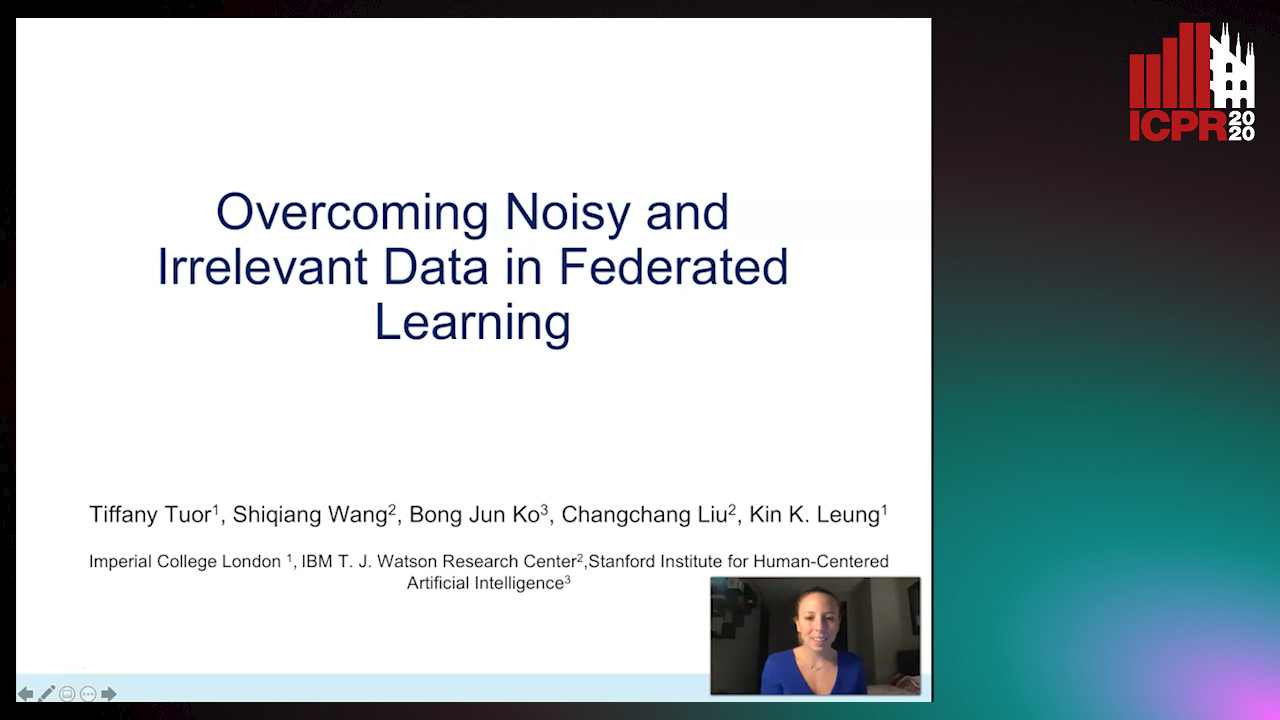
Auto-TLDR; Distributedly Selecting Relevant Data for Federated Learning
Similar papers
Adaptive Distillation for Decentralized Learning from Heterogeneous Clients
Jiaxin Ma, Ryo Yonetani, Zahid Iqbal
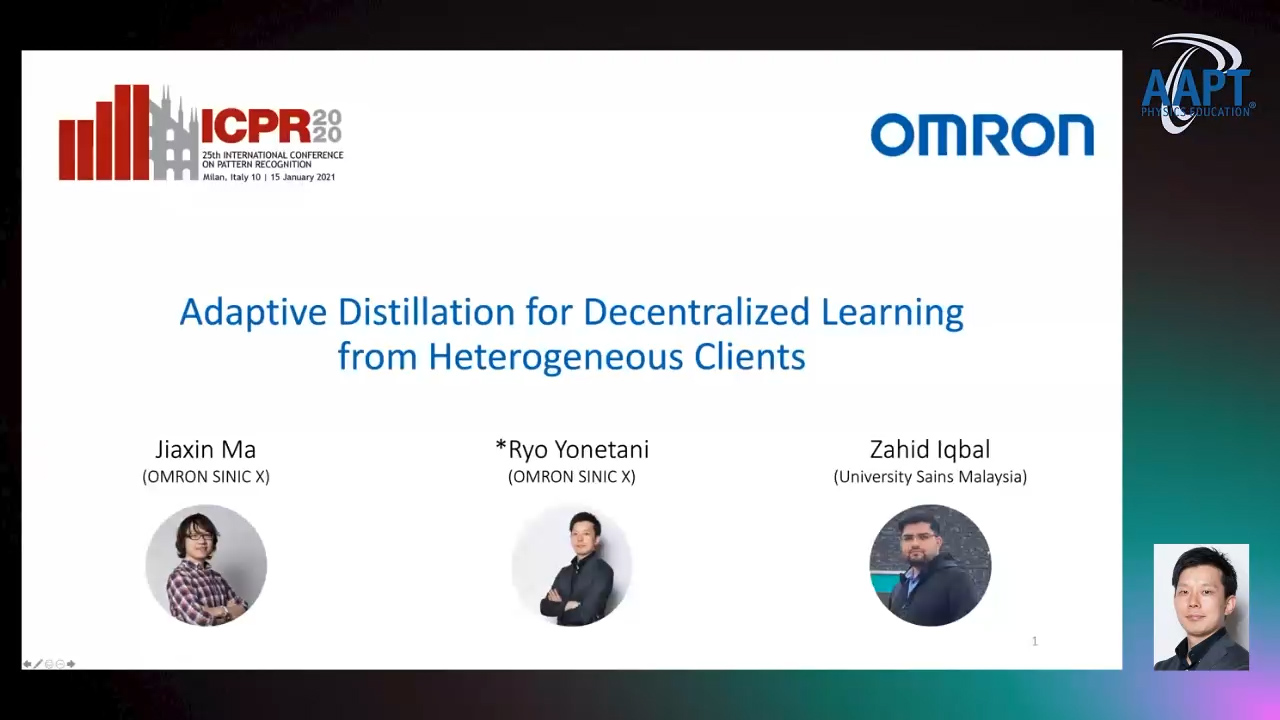
Auto-TLDR; Decentralized Learning via Adaptive Distillation
Abstract Slides Poster Similar
Meta Soft Label Generation for Noisy Labels

Auto-TLDR; MSLG: Meta-Learning for Noisy Label Generation
Abstract Slides Poster Similar
P-DIFF: Learning Classifier with Noisy Labels Based on Probability Difference Distributions
Wei Hu, Qihao Zhao, Yangyu Huang, Fan Zhang

Auto-TLDR; P-DIFF: A Simple and Effective Training Paradigm for Deep Neural Network Classifier with Noisy Labels
Abstract Slides Poster Similar
Iterative Label Improvement: Robust Training by Confidence Based Filtering and Dataset Partitioning
Christian Haase-Schütz, Rainer Stal, Heinz Hertlein, Bernhard Sick

Auto-TLDR; Meta Training and Labelling for Unlabelled Data
Abstract Slides Poster Similar
Towards Robust Learning with Different Label Noise Distributions
Diego Ortego, Eric Arazo, Paul Albert, Noel E O'Connor, Kevin Mcguinness

Auto-TLDR; Distribution Robust Pseudo-Labeling with Semi-supervised Learning
NeuralFP: Out-Of-Distribution Detection Using Fingerprints of Neural Networks
Wei-Han Lee, Steve Millman, Nirmit Desai, Mudhakar Srivatsa, Changchang Liu
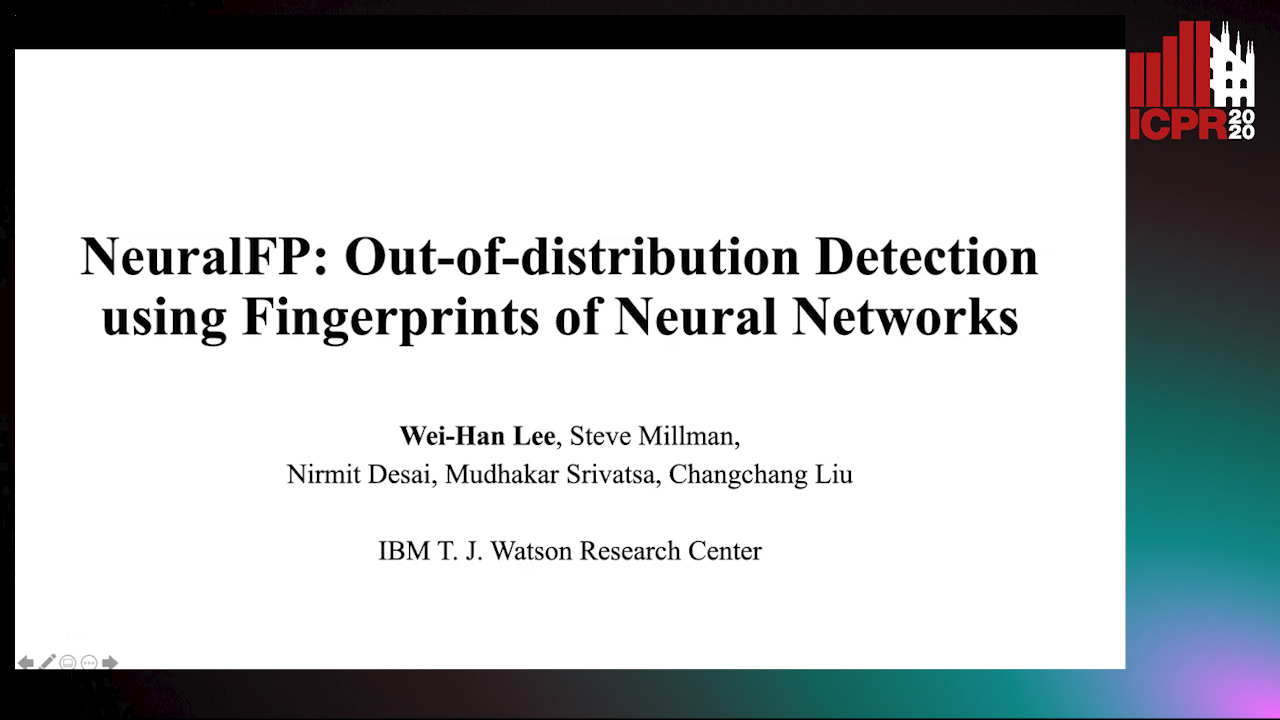
Auto-TLDR; NeuralFP: Detecting Out-of-Distribution Records Using Neural Network Models
Abstract Slides Poster Similar
Rethinking Deep Active Learning: Using Unlabeled Data at Model Training
Oriane Siméoni, Mateusz Budnik, Yannis Avrithis, Guillaume Gravier
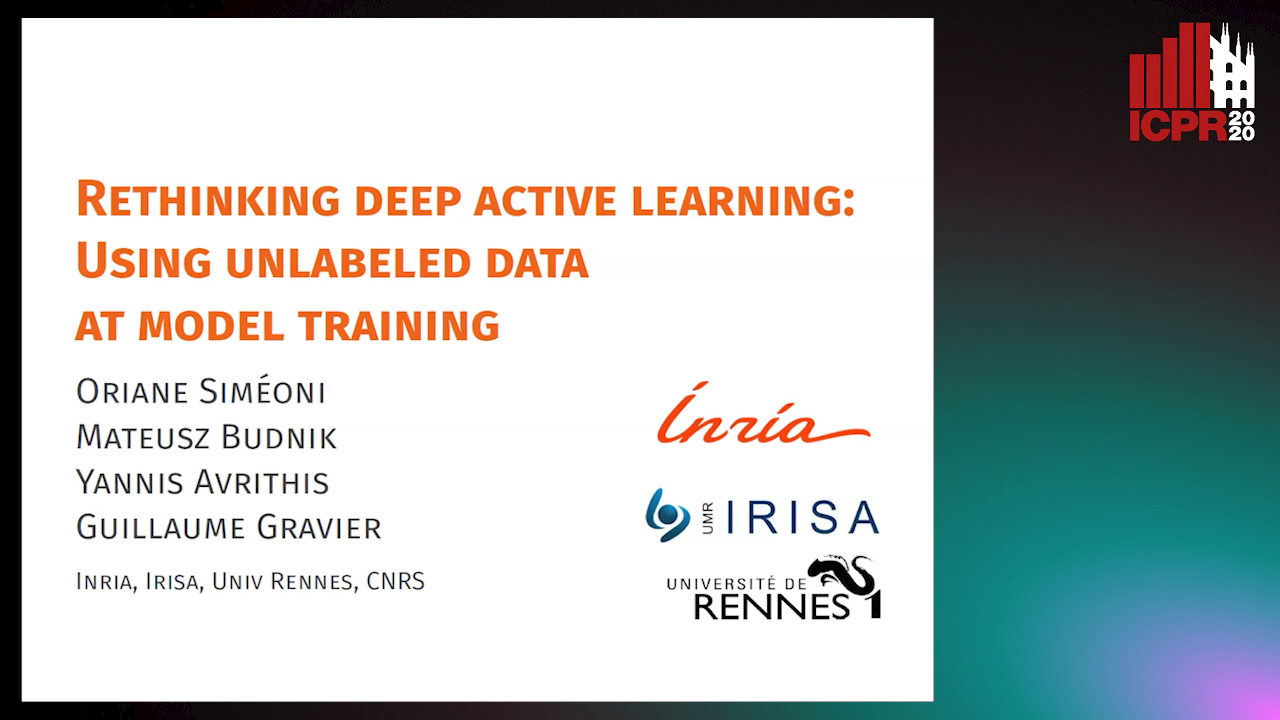
Auto-TLDR; Unlabeled Data for Active Learning
Abstract Slides Poster Similar
Making Every Label Count: Handling Semantic Imprecision by Integrating Domain Knowledge
Clemens-Alexander Brust, Björn Barz, Joachim Denzler

Auto-TLDR; Class Hierarchies for Imprecise Label Learning and Annotation eXtrapolation
Abstract Slides Poster Similar
Beyond Cross-Entropy: Learning Highly Separable Feature Distributions for Robust and Accurate Classification
Arslan Ali, Andrea Migliorati, Tiziano Bianchi, Enrico Magli

Auto-TLDR; Gaussian class-conditional simplex loss for adversarial robust multiclass classifiers
Abstract Slides Poster Similar
Local Clustering with Mean Teacher for Semi-Supervised Learning
Zexi Chen, Benjamin Dutton, Bharathkumar Ramachandra, Tianfu Wu, Ranga Raju Vatsavai

Auto-TLDR; Local Clustering for Semi-supervised Learning
Adaptive Noise Injection for Training Stochastic Student Networks from Deterministic Teachers
Yi Xiang Marcus Tan, Yuval Elovici, Alexander Binder

Auto-TLDR; Adaptive Stochastic Networks for Adversarial Attacks
A Close Look at Deep Learning with Small Data

Auto-TLDR; Low-Complex Neural Networks for Small Data Conditions
Abstract Slides Poster Similar
Generative Latent Implicit Conditional Optimization When Learning from Small Sample

Auto-TLDR; GLICO: Generative Latent Implicit Conditional Optimization for Small Sample Learning
Abstract Slides Poster Similar
Learning Embeddings for Image Clustering: An Empirical Study of Triplet Loss Approaches
Kalun Ho, Janis Keuper, Franz-Josef Pfreundt, Margret Keuper

Auto-TLDR; Clustering Objectives for K-means and Correlation Clustering Using Triplet Loss
Abstract Slides Poster Similar
Boundary Optimised Samples Training for Detecting Out-Of-Distribution Images
Luca Marson, Vladimir Li, Atsuto Maki

Auto-TLDR; Boundary Optimised Samples for Out-of-Distribution Input Detection in Deep Convolutional Networks
Abstract Slides Poster Similar
Evaluation of Anomaly Detection Algorithms for the Real-World Applications
Marija Ivanovska, Domen Tabernik, Danijel Skocaj, Janez Pers

Auto-TLDR; Evaluating Anomaly Detection Algorithms for Practical Applications
Abstract Slides Poster Similar
Low-Cost Lipschitz-Independent Adaptive Importance Sampling of Stochastic Gradients
Huikang Liu, Xiaolu Wang, Jiajin Li, Man-Cho Anthony So

Auto-TLDR; Adaptive Importance Sampling for Stochastic Gradient Descent
Image Representation Learning by Transformation Regression
Xifeng Guo, Jiyuan Liu, Sihang Zhou, En Zhu, Shihao Dong

Auto-TLDR; Self-supervised Image Representation Learning using Continuous Parameter Prediction
Abstract Slides Poster Similar
Separation of Aleatoric and Epistemic Uncertainty in Deterministic Deep Neural Networks
Denis Huseljic, Bernhard Sick, Marek Herde, Daniel Kottke

Auto-TLDR; AE-DNN: Modeling Uncertainty in Deep Neural Networks
Abstract Slides Poster Similar
Attack Agnostic Adversarial Defense via Visual Imperceptible Bound
Saheb Chhabra, Akshay Agarwal, Richa Singh, Mayank Vatsa
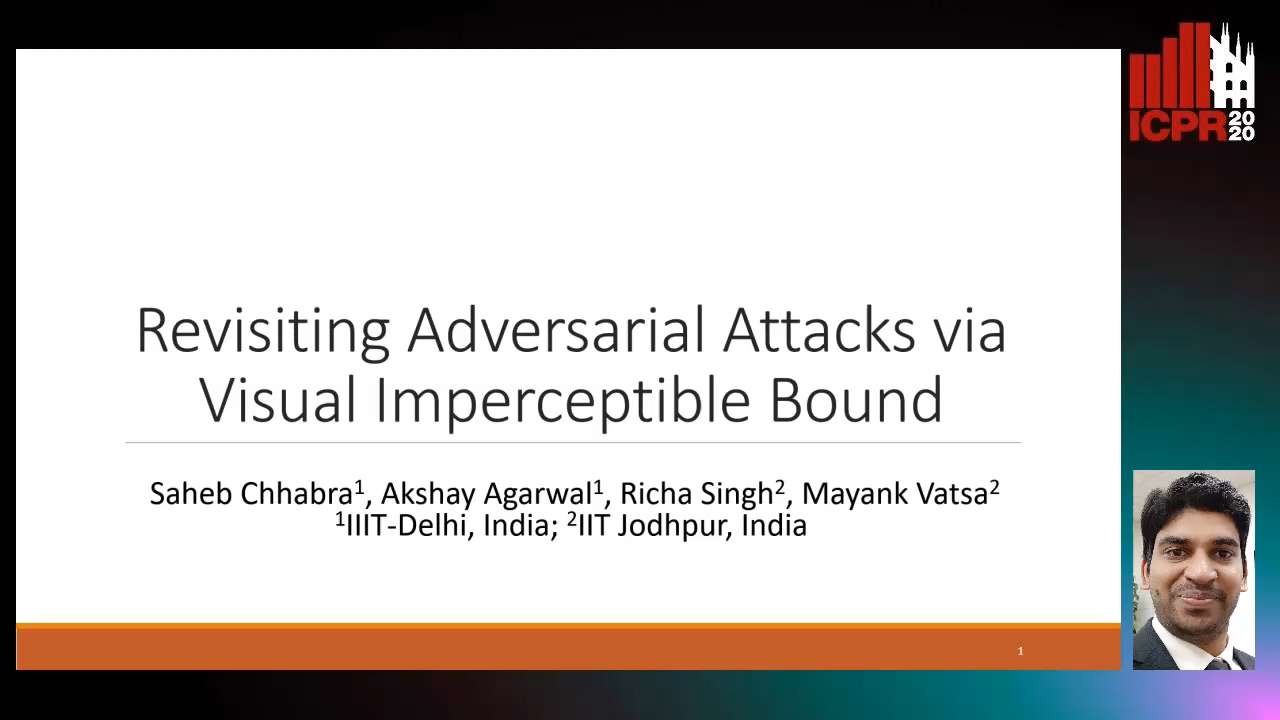
Auto-TLDR; Robust Adversarial Defense with Visual Imperceptible Bound
Abstract Slides Poster Similar
Multi-Modal Deep Clustering: Unsupervised Partitioning of Images

Auto-TLDR; Multi-Modal Deep Clustering for Unlabeled Images
Abstract Slides Poster Similar
Removing Backdoor-Based Watermarks in Neural Networks with Limited Data
Xuankai Liu, Fengting Li, Bihan Wen, Qi Li
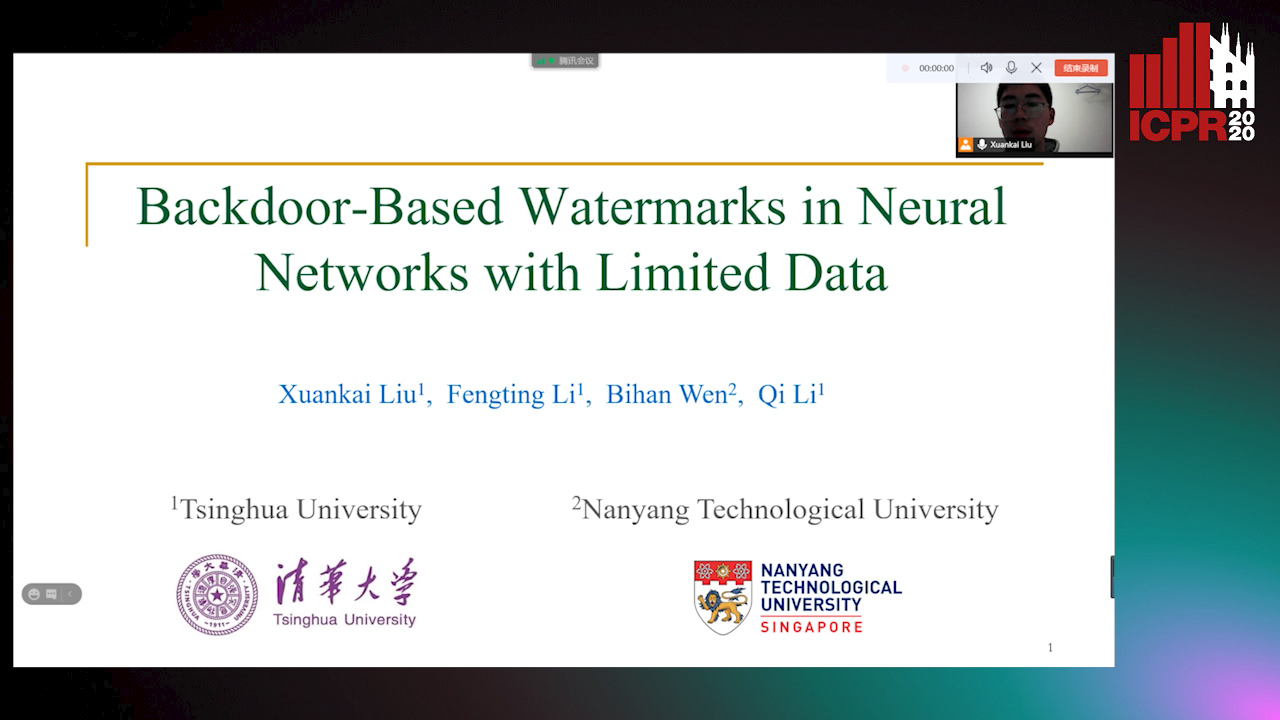
Auto-TLDR; WILD: A backdoor-based watermark removal framework using limited data
Abstract Slides Poster Similar
Rethinking of Deep Models Parameters with Respect to Data Distribution
Shitala Prasad, Dongyun Lin, Yiqun Li, Sheng Dong, Zaw Min Oo

Auto-TLDR; A progressive stepwise training strategy for deep neural networks
Abstract Slides Poster Similar
Rethinking Experience Replay: A Bag of Tricks for Continual Learning
Pietro Buzzega, Matteo Boschini, Angelo Porrello, Simone Calderara

Auto-TLDR; Experience Replay for Continual Learning: A Practical Approach
Abstract Slides Poster Similar
Enlarging Discriminative Power by Adding an Extra Class in Unsupervised Domain Adaptation
Hai Tran, Sumyeong Ahn, Taeyoung Lee, Yung Yi

Auto-TLDR; Unsupervised Domain Adaptation using Artificial Classes
Abstract Slides Poster Similar
Optimal Transport As a Defense against Adversarial Attacks
Quentin Bouniot, Romaric Audigier, Angélique Loesch
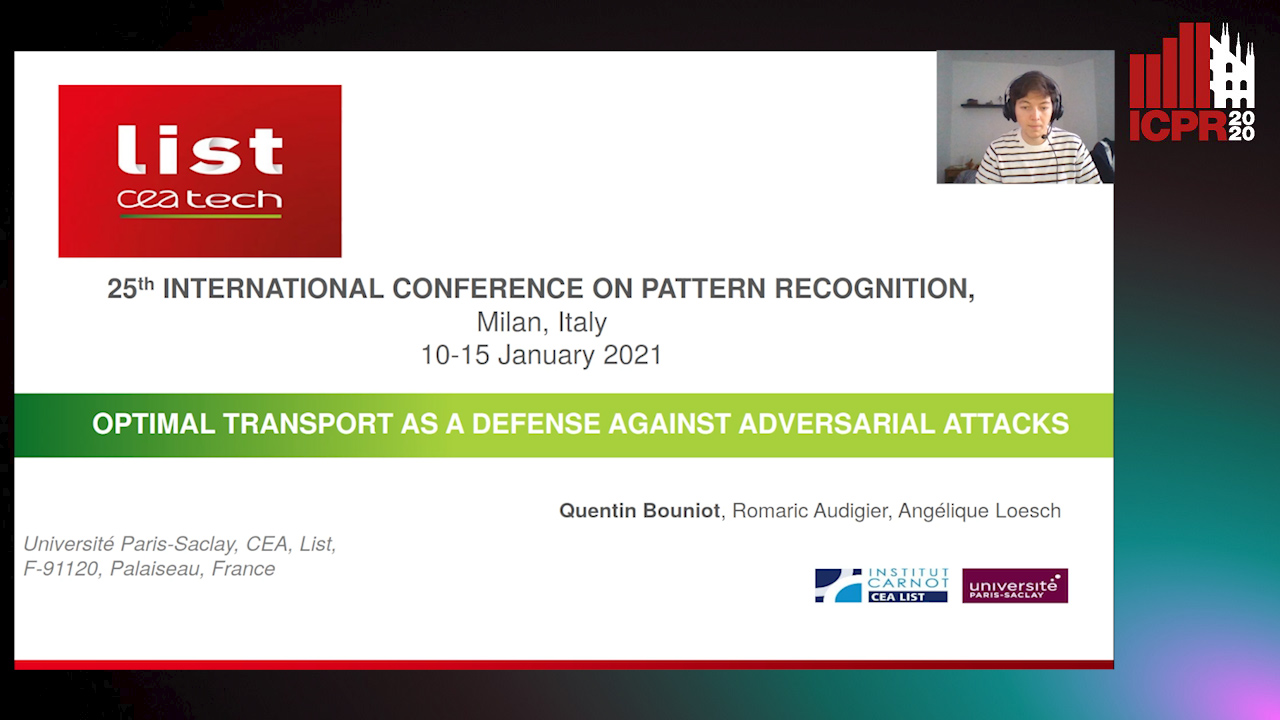
Auto-TLDR; Sinkhorn Adversarial Training with Optimal Transport Theory
Abstract Slides Poster Similar
Initialization Using Perlin Noise for Training Networks with a Limited Amount of Data
Nakamasa Inoue, Eisuke Yamagata, Hirokatsu Kataoka
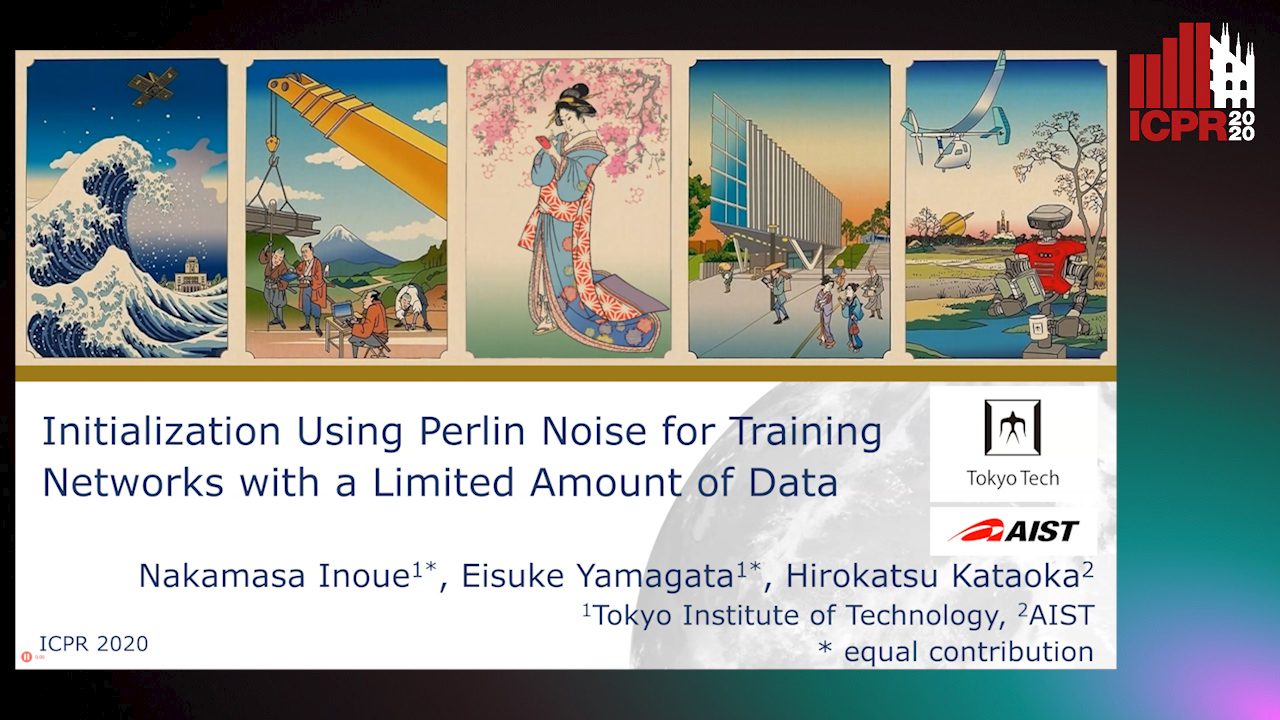
Auto-TLDR; Network Initialization Using Perlin Noise for Image Classification
Abstract Slides Poster Similar
Efficient Online Subclass Knowledge Distillation for Image Classification
Maria Tzelepi, Nikolaos Passalis, Anastasios Tefas

Auto-TLDR; OSKD: Online Subclass Knowledge Distillation
Abstract Slides Poster Similar
Class-Incremental Learning with Pre-Allocated Fixed Classifiers
Federico Pernici, Matteo Bruni, Claudio Baecchi, Francesco Turchini, Alberto Del Bimbo

Auto-TLDR; Class-Incremental Learning with Pre-allocated Output Nodes for Fixed Classifier
Abstract Slides Poster Similar
Verifying the Causes of Adversarial Examples
Honglin Li, Yifei Fan, Frieder Ganz, Tony Yezzi, Payam Barnaghi

Auto-TLDR; Exploring the Causes of Adversarial Examples in Neural Networks
Abstract Slides Poster Similar
On-Manifold Adversarial Data Augmentation Improves Uncertainty Calibration
Kanil Patel, William Beluch, Dan Zhang, Michael Pfeiffer, Bin Yang

Auto-TLDR; On-Manifold Adversarial Data Augmentation for Uncertainty Estimation
Joint Supervised and Self-Supervised Learning for 3D Real World Challenges
Antonio Alliegro, Davide Boscaini, Tatiana Tommasi

Auto-TLDR; Self-supervision for 3D Shape Classification and Segmentation in Point Clouds
RNN Training along Locally Optimal Trajectories via Frank-Wolfe Algorithm
Yun Yue, Ming Li, Venkatesh Saligrama, Ziming Zhang

Auto-TLDR; Frank-Wolfe Algorithm for Efficient Training of RNNs
Abstract Slides Poster Similar
Improving Batch Normalization with Skewness Reduction for Deep Neural Networks
Pak Lun Kevin Ding, Martin Sarah, Baoxin Li

Auto-TLDR; Batch Normalization with Skewness Reduction
Abstract Slides Poster Similar
Knowledge Distillation with a Precise Teacher and Prediction with Abstention

Auto-TLDR; Knowledge Distillation using Deep gambler loss and selective classification framework
Abstract Slides Poster Similar
Discriminative Multi-Level Reconstruction under Compact Latent Space for One-Class Novelty Detection
Jaewoo Park, Yoon Gyo Jung, Andrew Teoh

Auto-TLDR; Discriminative Compact AE for One-Class novelty detection and Adversarial Example Detection
Cross-People Mobile-Phone Based Airwriting Character Recognition
Yunzhe Li, Hui Zheng, He Zhu, Haojun Ai, Xiaowei Dong

Auto-TLDR; Cross-People Airwriting Recognition via Motion Sensor Signal via Deep Neural Network
Abstract Slides Poster Similar
A Joint Representation Learning and Feature Modeling Approach for One-Class Recognition
Pramuditha Perera, Vishal Patel

Auto-TLDR; Combining Generative Features and One-Class Classification for Effective One-class Recognition
Abstract Slides Poster Similar
Semi-Supervised Domain Adaptation Via Selective Pseudo Labeling and Progressive Self-Training

Auto-TLDR; Semi-supervised Domain Adaptation with Pseudo Labels
Abstract Slides Poster Similar
The eXPose Approach to Crosslier Detection
Antonio Barata, Frank Takes, Hendrik Van Den Herik, Cor Veenman

Auto-TLDR; EXPose: Crosslier Detection Based on Supervised Category Modeling
Abstract Slides Poster Similar
Pseudo Rehearsal Using Non Photo-Realistic Images
Bhasker Sri Harsha Suri, Kalidas Yeturu
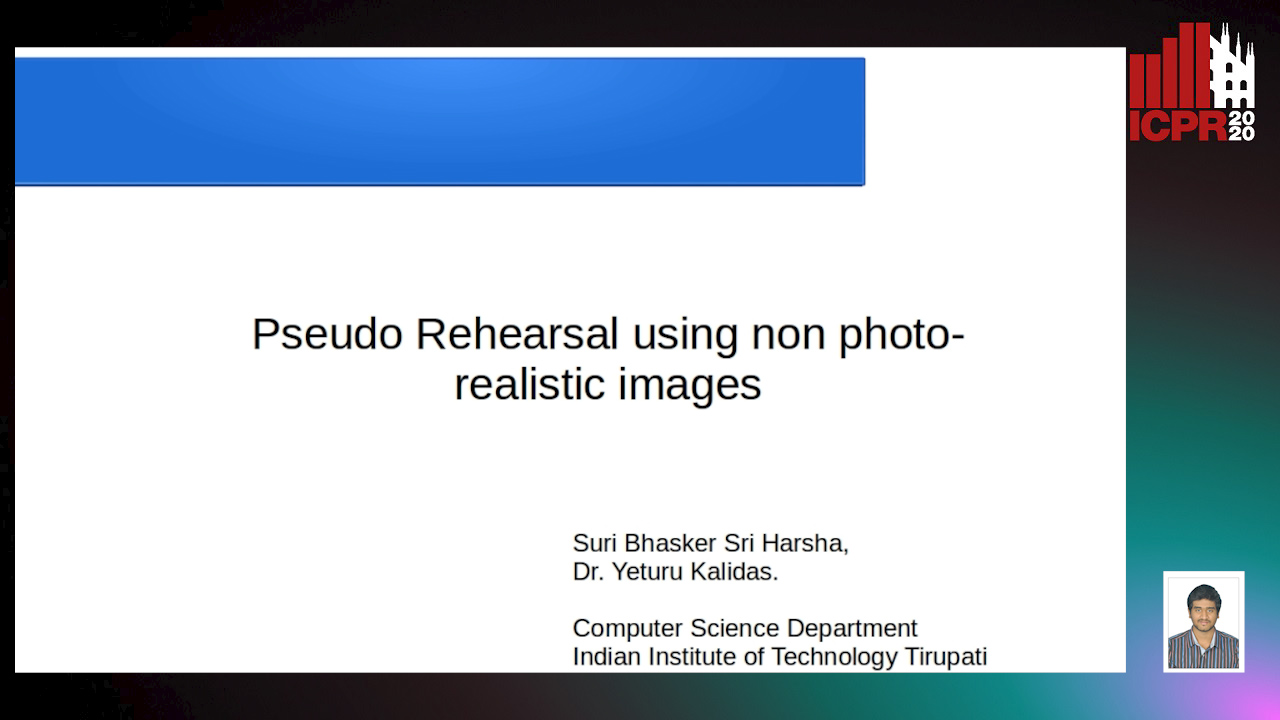
Auto-TLDR; Pseudo-Rehearsing for Catastrophic Forgetting
Abstract Slides Poster Similar
GuCNet: A Guided Clustering-Based Network for Improved Classification
Ushasi Chaudhuri, Syomantak Chaudhuri, Subhasis Chaudhuri

Auto-TLDR; Semantic Classification of Challenging Dataset Using Guide Datasets
Abstract Slides Poster Similar
Can Data Placement Be Effective for Neural Networks Classification Tasks? Introducing the Orthogonal Loss
Brais Cancela, Veronica Bolon-Canedo, Amparo Alonso-Betanzos

Auto-TLDR; Spatial Placement for Neural Network Training Loss Functions
Abstract Slides Poster Similar
Deep Learning on Active Sonar Data Using Bayesian Optimization for Hyperparameter Tuning
Henrik Berg, Karl Thomas Hjelmervik

Auto-TLDR; Bayesian Optimization for Sonar Operations in Littoral Environments
Abstract Slides Poster Similar
MetaMix: Improved Meta-Learning with Interpolation-based Consistency Regularization
Yangbin Chen, Yun Ma, Tom Ko, Jianping Wang, Qing Li

Auto-TLDR; MetaMix: A Meta-Agnostic Meta-Learning Algorithm for Few-Shot Classification
Abstract Slides Poster Similar
Revisiting ImprovedGAN with Metric Learning for Semi-Supervised Learning
Jaewoo Park, Yoon Gyo Jung, Andrew Teoh

Auto-TLDR; Improving ImprovedGAN with Metric Learning for Semi-supervised Learning
Abstract Slides Poster Similar
Contextual Classification Using Self-Supervised Auxiliary Models for Deep Neural Networks
Sebastian Palacio, Philipp Engler, Jörn Hees, Andreas Dengel

Auto-TLDR; Self-Supervised Autogenous Learning for Deep Neural Networks
Abstract Slides Poster Similar
Rethinking Domain Generalization Baselines
Francesco Cappio Borlino, Antonio D'Innocente, Tatiana Tommasi

Auto-TLDR; Style Transfer Data Augmentation for Domain Generalization
Abstract Slides Poster Similar